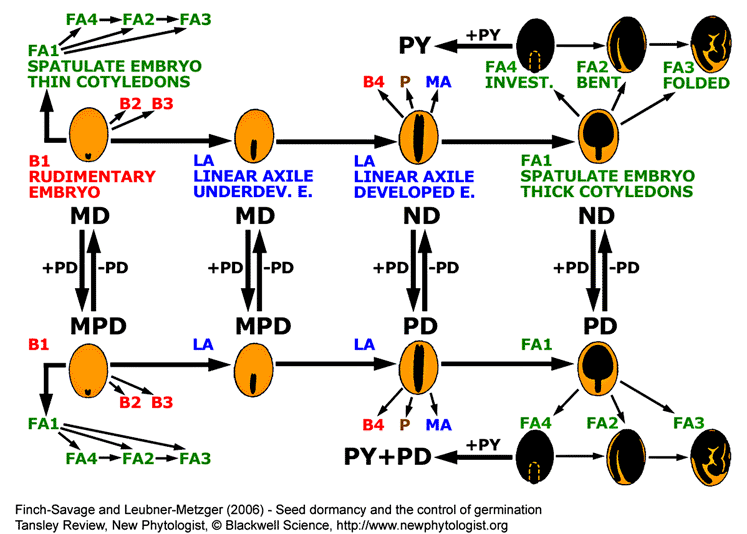Tansley Review - New Phytologist 171: 501-523 (2006)
Seed dormancy and the control of germination
(2) Institut für Biologie II (Botanik/Pflanzenphysiologie), Albert-Ludwigs-Universität Freiburg, Schänzlestr. 1, D-79104 Freiburg i. Br., Germany, Web: 'The Seed Biology Place' http://www.seedbiology.de
Received February 23, 2006; accepted March 27, 2006

Figure 5. Summary of general trends in angiosperm seed evolution with respect to seed type and dormancy class. Seeds with small embryo and abundant endosperm (B1 seed type) are primitive and evolution shows a general trend (indicated by arrows) towards mature seeds with little or no endosperm in which the embryo occupies most of the seed (through LA to FA seed types). Gain or loss of PD to each of these seed types (B1, LA and FA1) alters the dormancy class as indicated. Similar changes can also occur in the other seed types. Addition of PY to FA4-type ND or PD seeds is indicated as a side branch occurring in specialized species. This addition can be reversed and PY can also be added to other seed types (not shown). Seed types and dormancy classes are described in Fig. 3. This diagram is based on information given in figures 12.21 and 12.22 of Baskin and Baskin (1998).
| Article in PDF format (2 MB) |
|
|
|
The Seed Biology Place
|
Webdesign Gerhard Leubner 2000
|